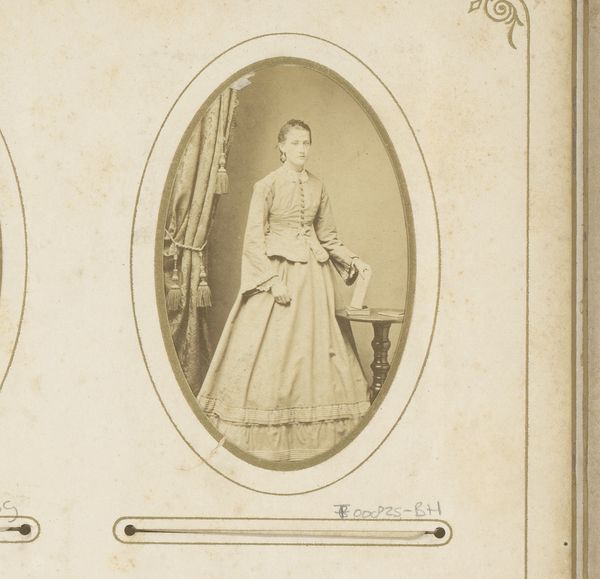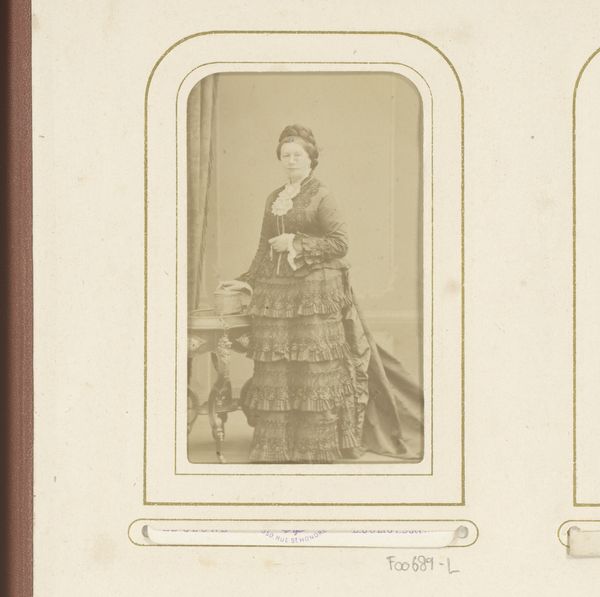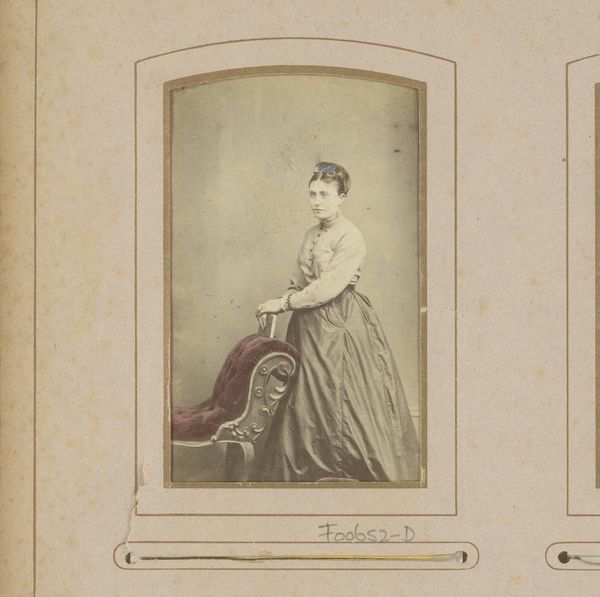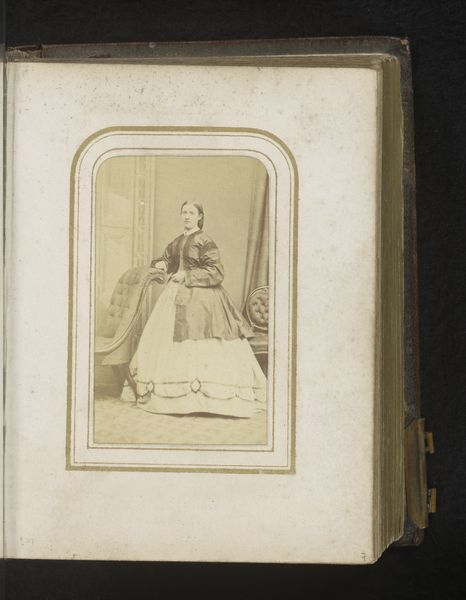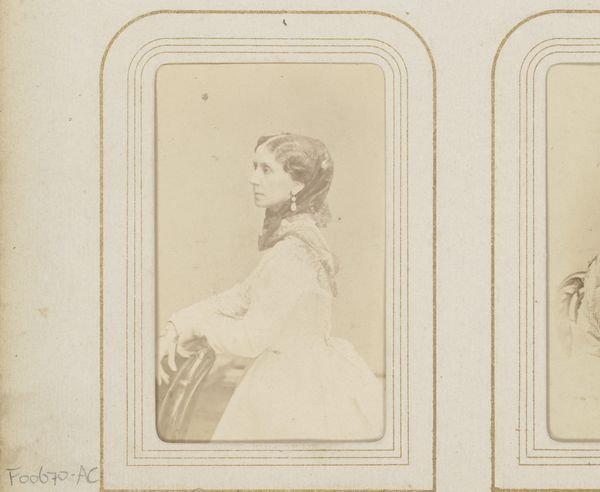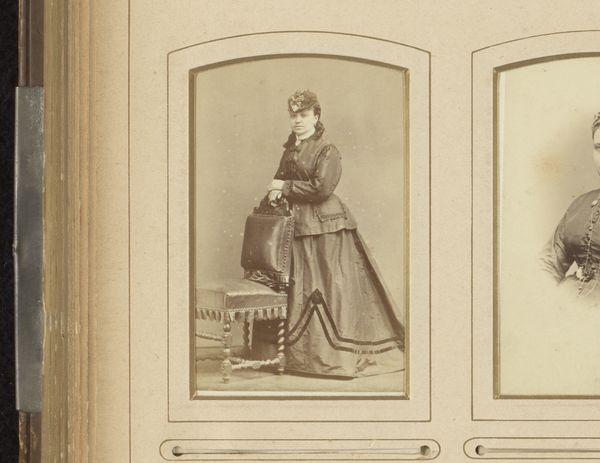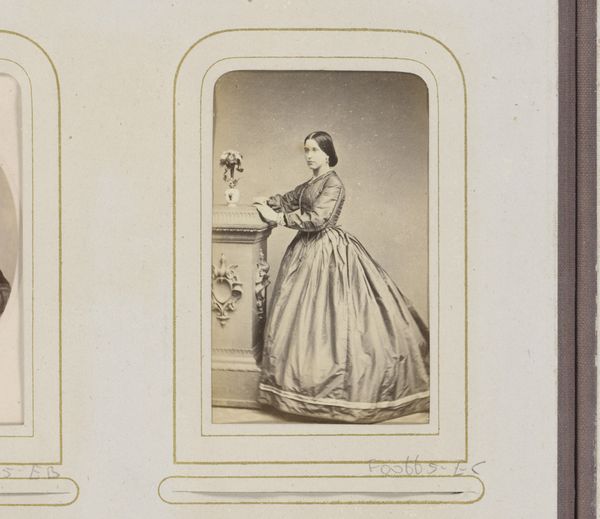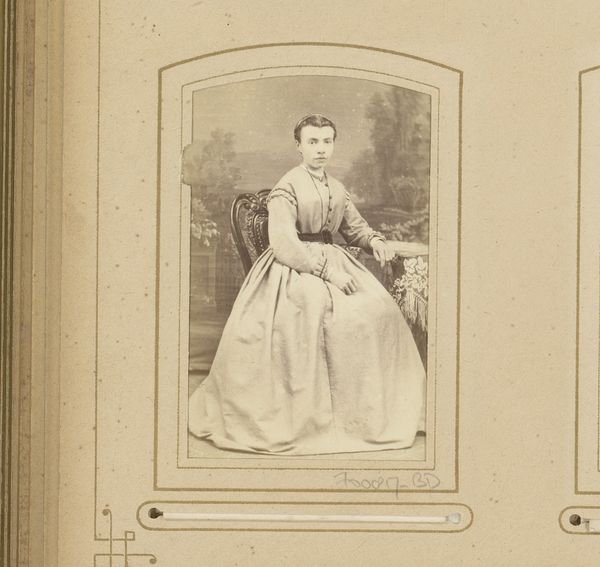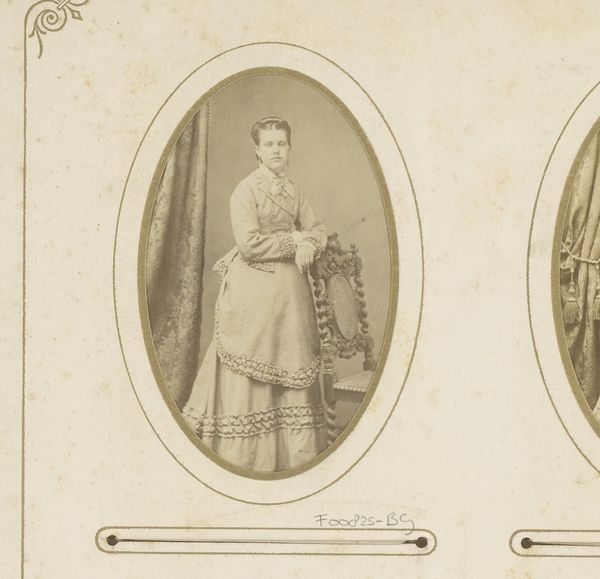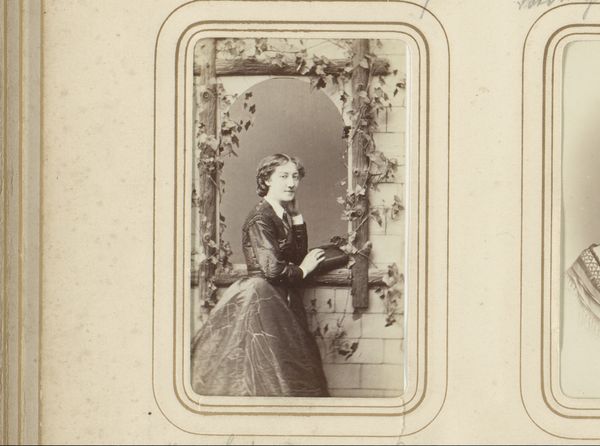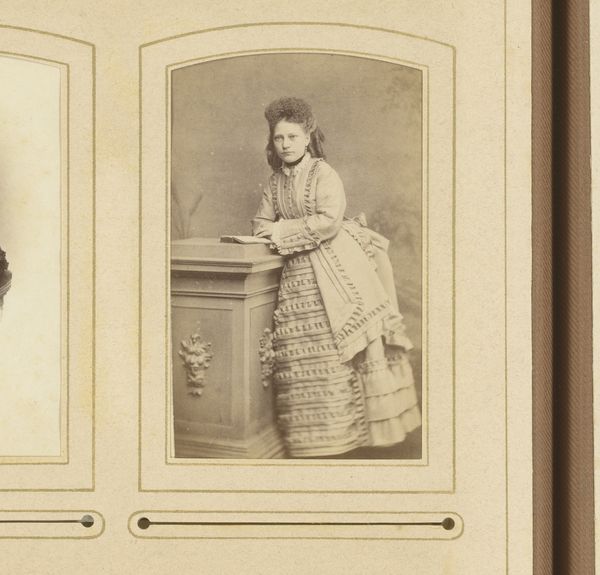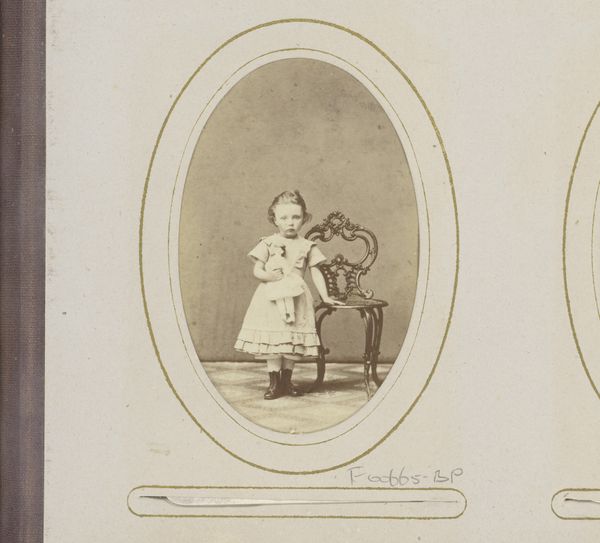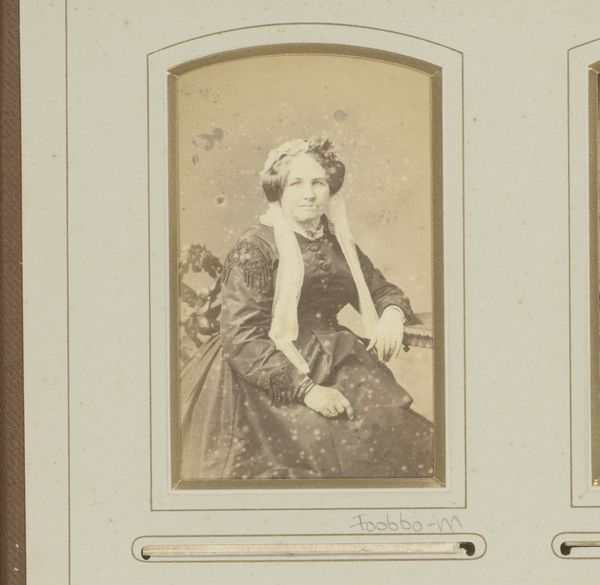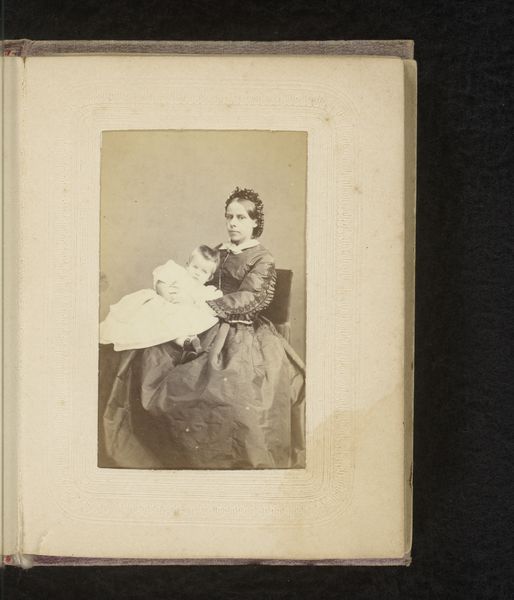
photography, albumen-print
#
portrait
#
book
#
photography
#
19th century
#
albumen-print
Dimensions: height 82 mm, width 50 mm
Copyright: Rijks Museum: Open Domain
Curator: "Portret van een staande vrouw met haar hand op een boek," or "Portrait of a Standing Woman with Her Hand on a Book." It's an albumen print estimated to have been made between 1882 and 1890. What strikes you first? Editor: The monochrome tonality lends this photograph a subdued yet serious character. It evokes a feeling of controlled elegance and restrained narrative. Curator: Absolutely. Observe the composition itself. The woman is positioned almost centrally, but not quite. This slight asymmetry prevents the image from becoming static and draws attention to her interaction with the book and the subtle fall of light across the neutral curtain background. The frame it’s in is also interesting with its imagery of ships and Queen Elizabeth I. Editor: The placement of her hand is particularly striking, as the gesture of a delicate grasp and its connection to literacy could reveal much about social expectations of women during the late 19th century. Do you see any of this potentially subversive undertones reflected in the photographic medium? Curator: It is likely this type of picture was destined for private circulation within the family. Photography served as a key technology in democratizing the portrait, while it also facilitated maintaining cultural cohesion across far distances, the albumen-print process itself involves intricate chemical baths and coating, lending an elevated, precious status. What are your views on the symbolism of objects as elements of art? Editor: It's all meticulously posed; an artful constructed reality. Notice her stance, posture, and even expression—all these meticulously align within an established, gendered social narrative and a distinct aesthetic. And, if the book stands in here as a reference of the women in the picture; and there are, on the outer frame, pictures of vessels and queens: does it create a specific narrative? Curator: You’ve identified the crucial dialogue between form and socio-cultural identity. How do the textures—the folds in her dress, the polished wood of the table—contribute? Editor: Each textile has been so expertly staged with great precision in line and light that the surface design of each object adds depth and narrative detail. Her clothing speaks to both affluence and a certain formality, don’t you agree? Curator: Certainly. Thinking of that balance between accessibility, private and public, it’s a compelling snapshot into the way portraiture served both personal and more symbolic ends in the 19th century. Editor: It is an enigmatic piece that manages to convey composure while inviting us to question what surfaces of control conceal. A captivating testament to its era.
Comments
No comments
Be the first to comment and join the conversation on the ultimate creative platform.
